Now that ChatGPT has been around for a little while (although it is less than a year old!) this revolutionary artificial intelligence tool continues to amaze me. This digital Swiss Army knife can support educators in myriad ways from brainstorming ideas to crafting engaging lesson plans. If you’re unfamiliar with ChatGPT, you can learn more here.
The latest iteration of ChatGPT, ChatGPT 4.0, has more data and computing power than the previous versions and is proving to be more accurate, creative, and reliable in solving complex problems than the earlier versions. Of particular interest to me is the addition of plug-ins that are now available on ChatGPT 4.0 and how those plug-ins can be used to support data retrieval and in turn how they can support educators.
What are ChatGPT Plug-Ins?
The best way to describe ChatGPT plug-ins is to consider them analogous to the extensions found on Google Chrome. They are a series of specific skills connected to existing websites that you can activate. These skills allow ChatGPT to interact with live data from the internet as well as to retrieve information from the corresponding websites. Some if the skills include displaying images, Gifs, QR codes, data tables, charts, etc. With specific plug-ins activated, ChatGPT can complete tasks previously impossible with the stated limitations of the bot being unable to access the internet.
Activating a plug-in and providing a prompt related to the content you’re focusing on will allow ChatGPT to access the information specific to the plug-in. For example: If you activate the Wolfram plug-in, ChatGPT will be able to display formulas, calculations, charts and graphs that it previously was only able to display via text.
Without the Plug-in:
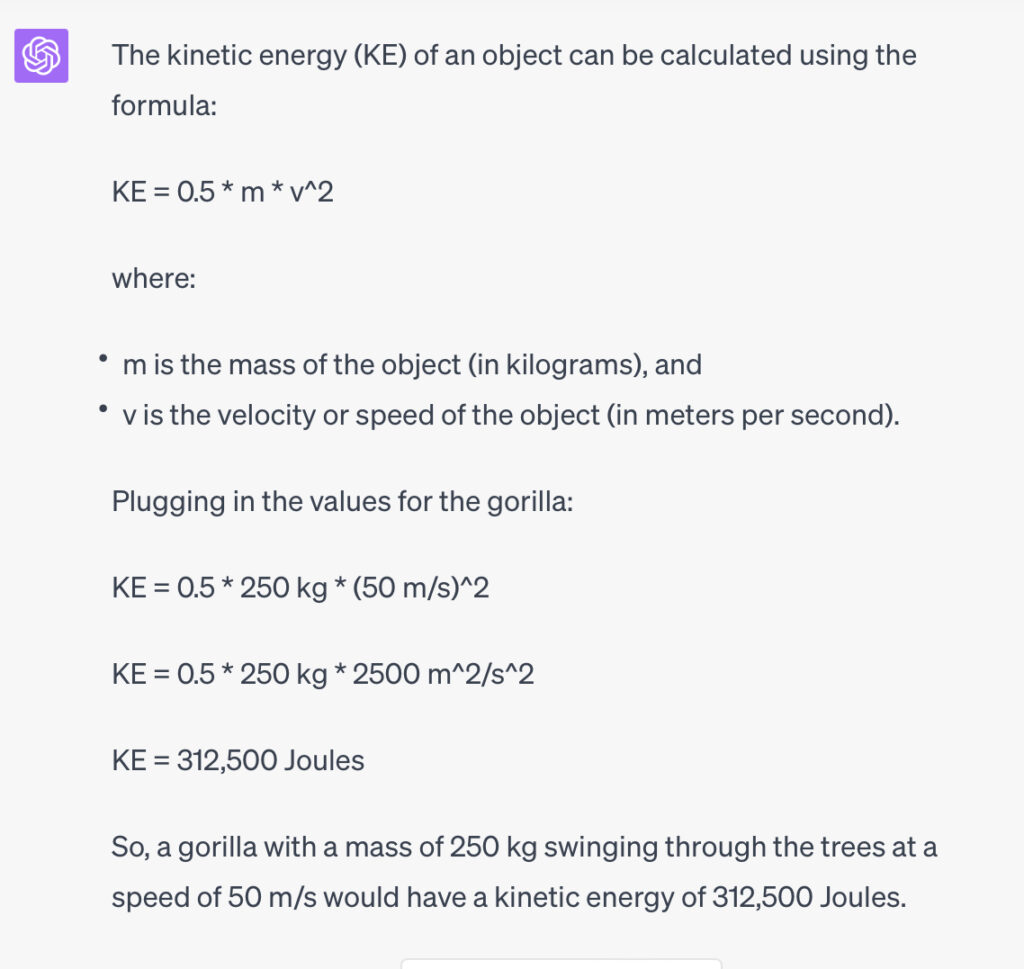
With the Wolfram Plug-In:
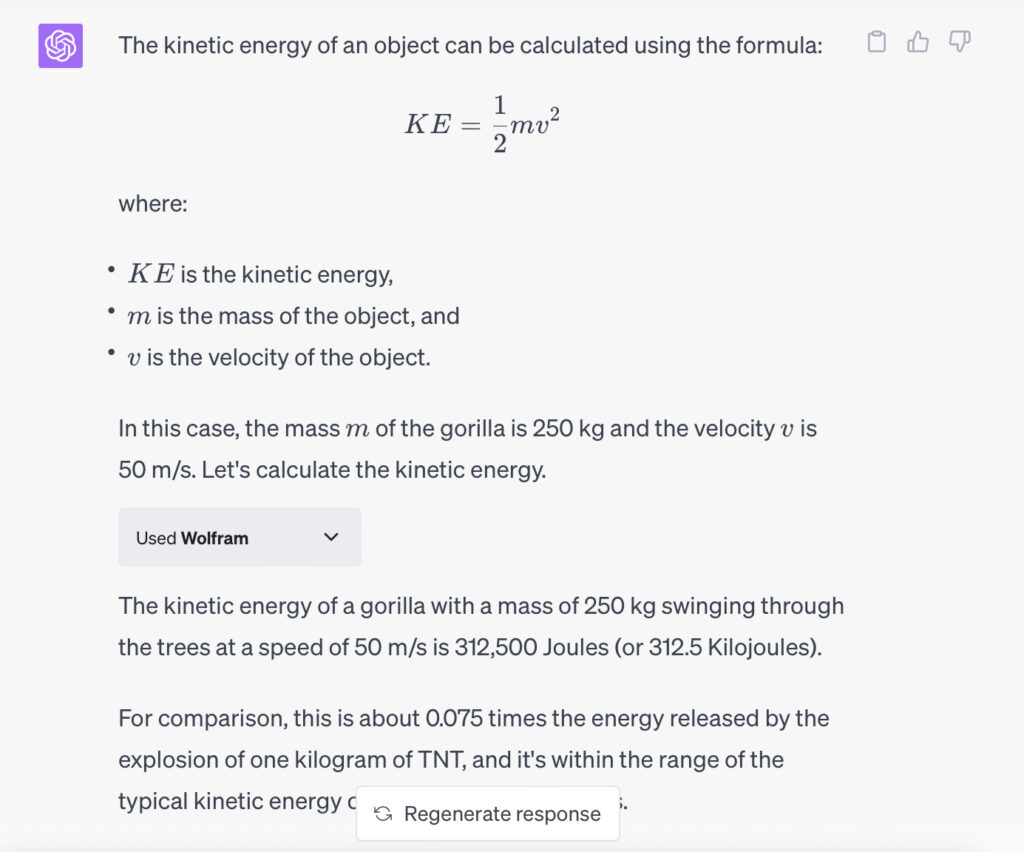
In this example you can see how the bot is now able to complete the calculation using more traditional mathematical formatting rather than the linear display.
A follow up inquiry allows ChatGPT to access Wolfram to show the step-by-step process through which these calculations were created, a FANTASTIC instructional support!!
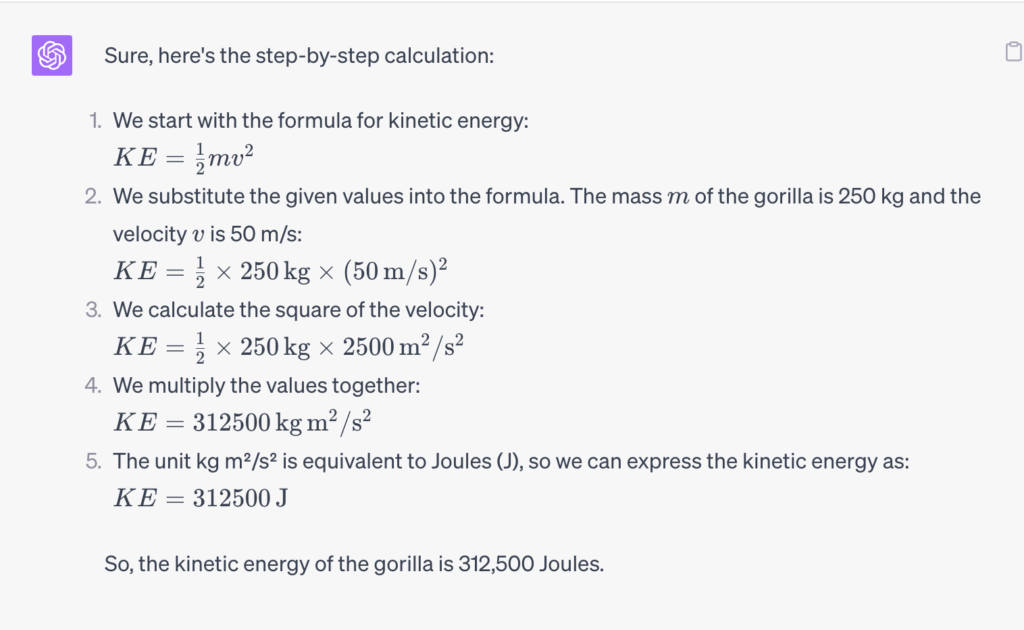
This example, of course, only scratches the surface of the benefits of the Wolfram plug-in! Other skills include the ability to use Wolfram with ChatGPT to generate charts and graphs as well as using the Wolfram knowledge base to fact check data generated by ChatGPT. Learn MORE about what you can do with the Wolfram plugin here: <Source: https://www.makeuseof.com/use-chatgpt-wolfram-plugin/>
Accessing ChatGPT and Plug-Ins
ChatGPT Plug-ins are only available on premium ChatGPT accounts. In your premium account, start by logging into ChatGPT (https://chat.openai.com) so you can access the GPT4 version. Once you are on the platform, click on the ChatGPT4 symbol at the top of the screen:

In order to see the Plug-ins, you have to turn them on in the settings section of ChatGPT. This can be done by following these steps:
- Click the … icon on the bottom left hand corner of your screen.
- Select Settings
- Click Beta features
- Toggle on the Plug-Ins switch
More to Explore!
ChatGPT has supported my instruction in SO many ways, and now with these additional plug-ins, it has become immensely more powerful and productive! Here are a few of the plug-ins I’ve explored and possible uses for them, all of which have tremendous potential to support teachers.
Give them a try and stay tuned for more plug-in updates and use case scenarios!
If you’re looking to learn MORE about using AI in YOUR classroom by reading Artificial Intelligence to Streamline Your Teacher Life: The ChatGPT Guide for Educators. This guide BY a teacher FOR teachers will take you step-by-step through EVERYTHING you need to know to successfully prompt and use AI tools!!
You’ll be glad you were
✨Using Your Smarticles✨
***This author gratefully acknowledges the support of the New York State Master Teacher Program in the preparation of this post.***
FREE ✨Smarticles!✨
Connect with ✨Your Smarticles✨ to get our latest content by email.

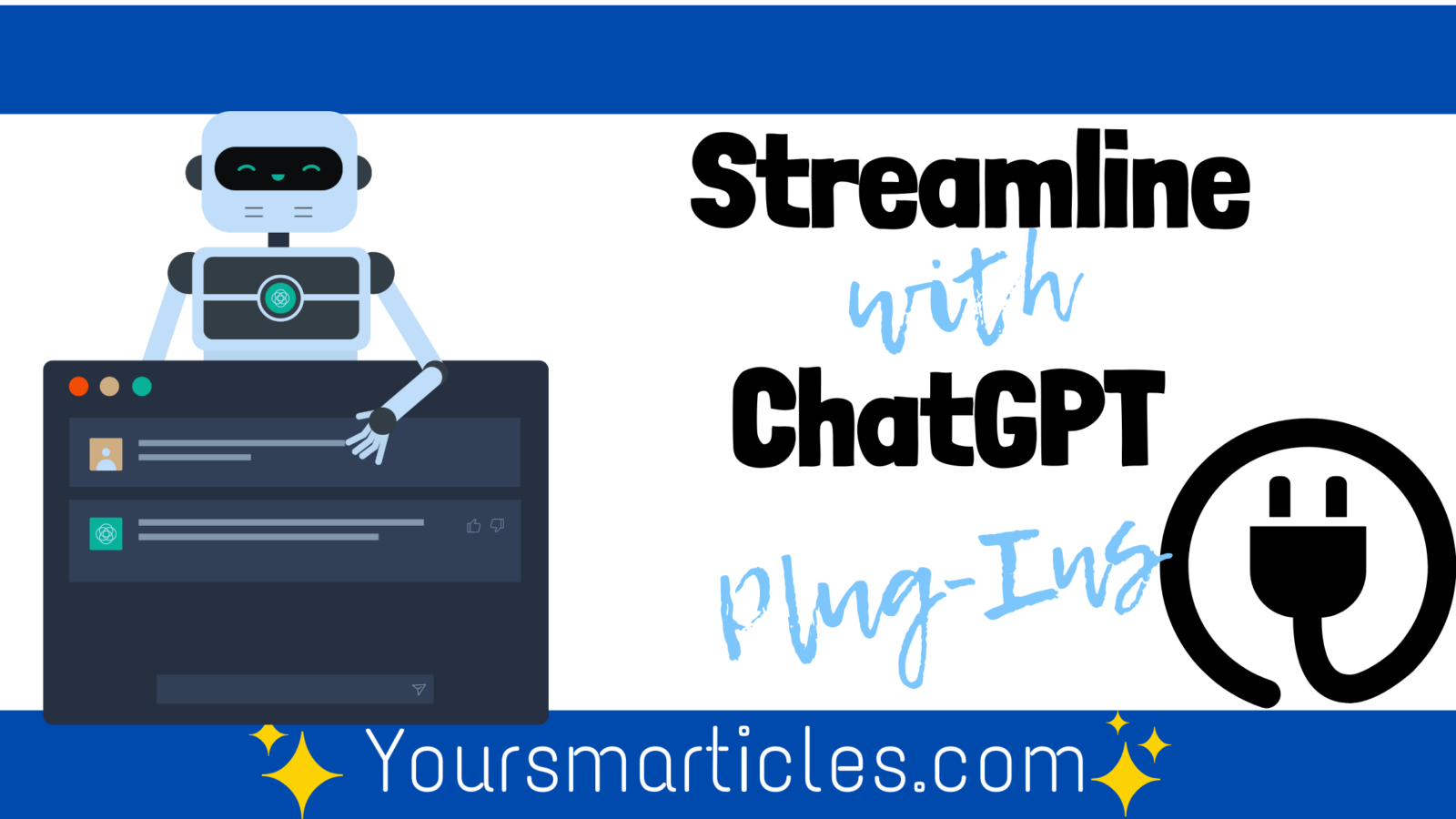
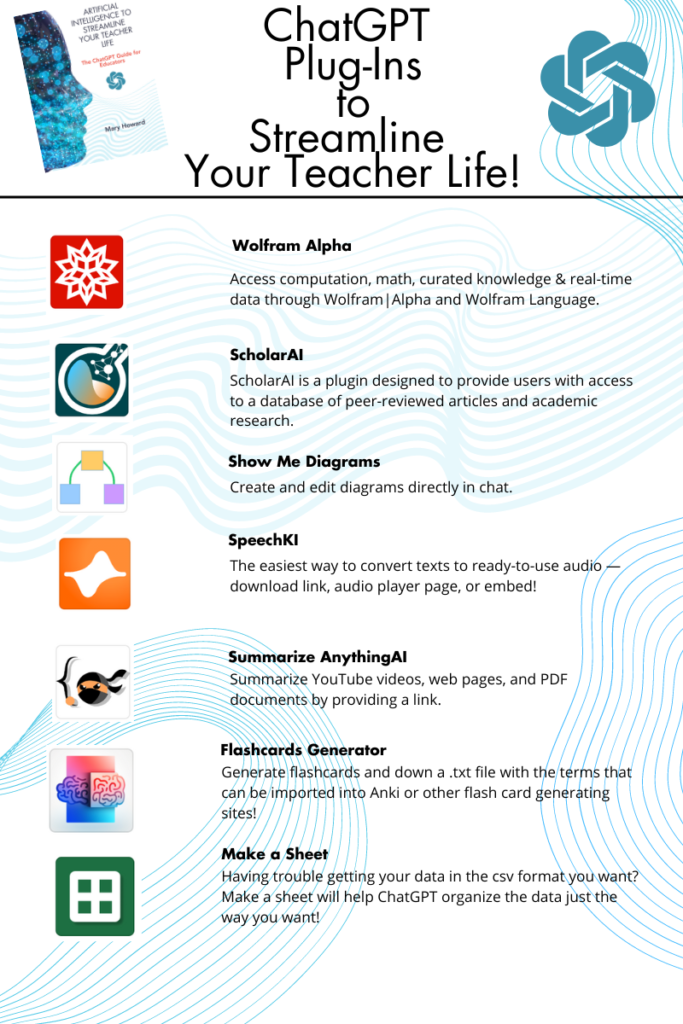
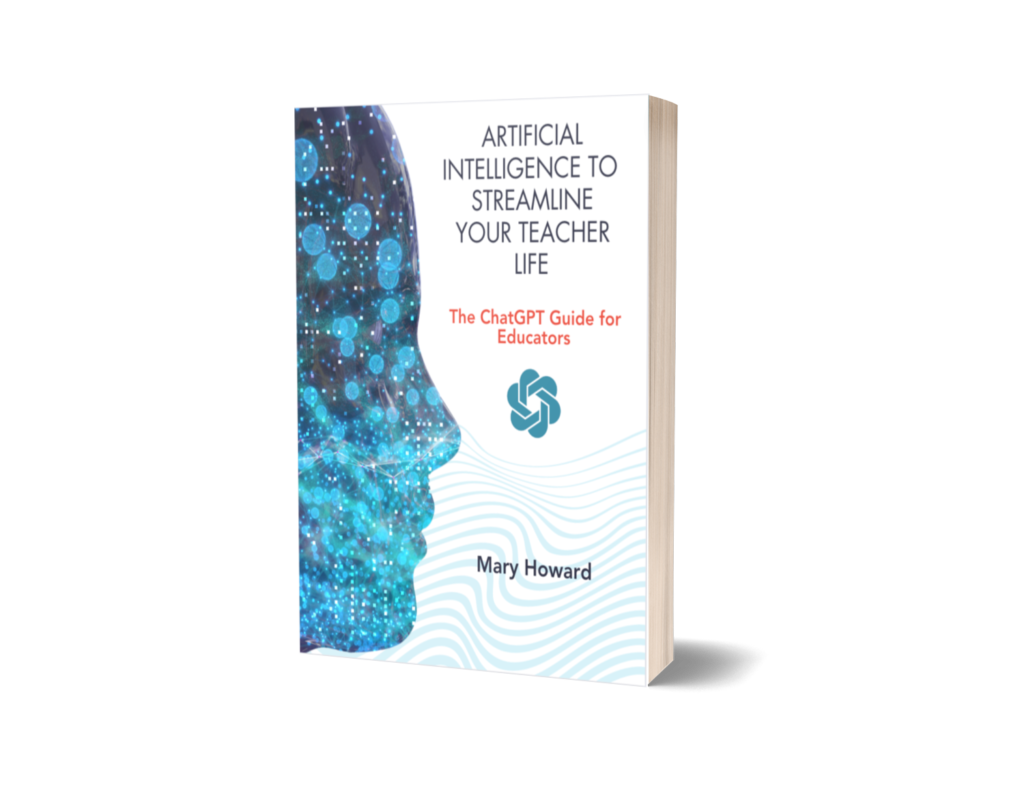
This plug-in really boosts the functionality of this system for teachers. Thanks so much for discovering and sharing this!